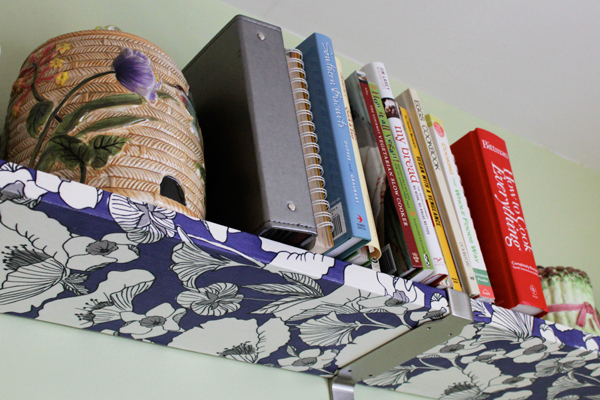
As an apartment dweller, I move more often than I’d love to. Sometimes a move means that the black shelves I bought for my old place didn’t exactly coordinate with the light finish wood of my kitchen cabinets. Rather than waste a chunk of change on new shelves that specifically match my honey-hued cupboards, I thought I’d take the opportunity to get a little creative.
Supplies
wooden shelves
Mod Podge Matte
Mod Podge Hard Coat
sanding & priming supplies (as needed)
fabric scissors
iron (optiona)
tape measure
sponge brush
brayer
Directions
If your shelves need sanded, that’s the first step. My handy dandy power sander was necessary to avoid tendinitis and endless hours of rubbing back and forth to get the stubborn finish off. Wipe off any dust with a damp cloth, let your shelves dry, and then prime them.
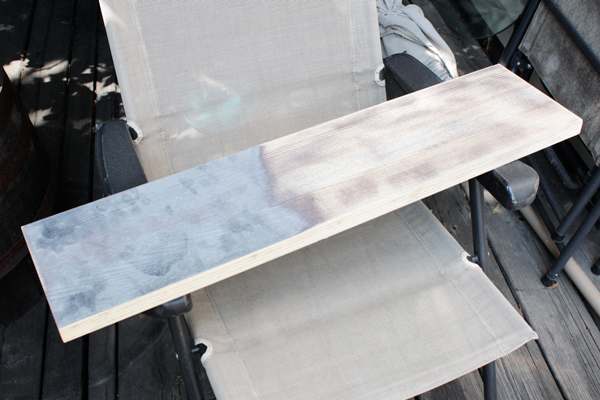
If your fabric is the same color as your primer, you don’t need to paint over the primer. If not, paint a layer of paint on your shelf that matches your fabric. The color of the shelf below your fabric will show through when you add the fabric. The shelves I made over are Ikea ekby bjarnums, in the dark finish, with brackets that cover the left and right-facing ends, so I only needed to prime/paint the front edge, top and bottom of the shelves. My fabric is white, which is why I only needed white primer on my shelves.
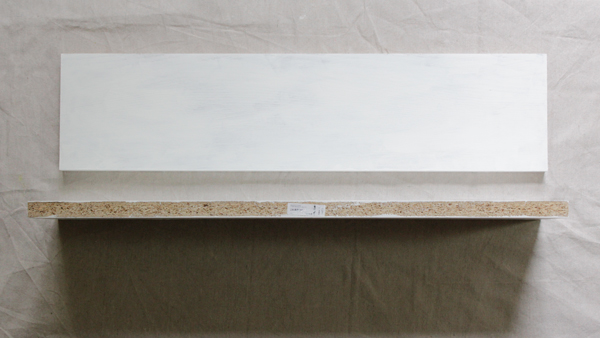
Cut a piece of fabric large enough to cover your shelf plus half an inch on the ends. To reiterate, since my shelf only required coverage on the top, bottom and front edge, I only needed a rectangle large enough to wrap around my shelf like a Christmas present, but with open ends on the short sides of the shelf and a little bit extra on the long side to wrap the fabric over to the edge that will be facing the wall the shelf is mounted on. Make sense? Holler in the comments if not! :)
Apply a layer of Matte Mod Podge onto one side of your shelf and carefully align the fabric so it lays square on the shelf, leaving an extra half inch of fabric hanging off the first end. Right now is the time to get your fabric perfectly straight – you won’t be able to adjust it after this step. When you’re all lined up, smooth down the fabric onto the shelf and Mod Podge layer.
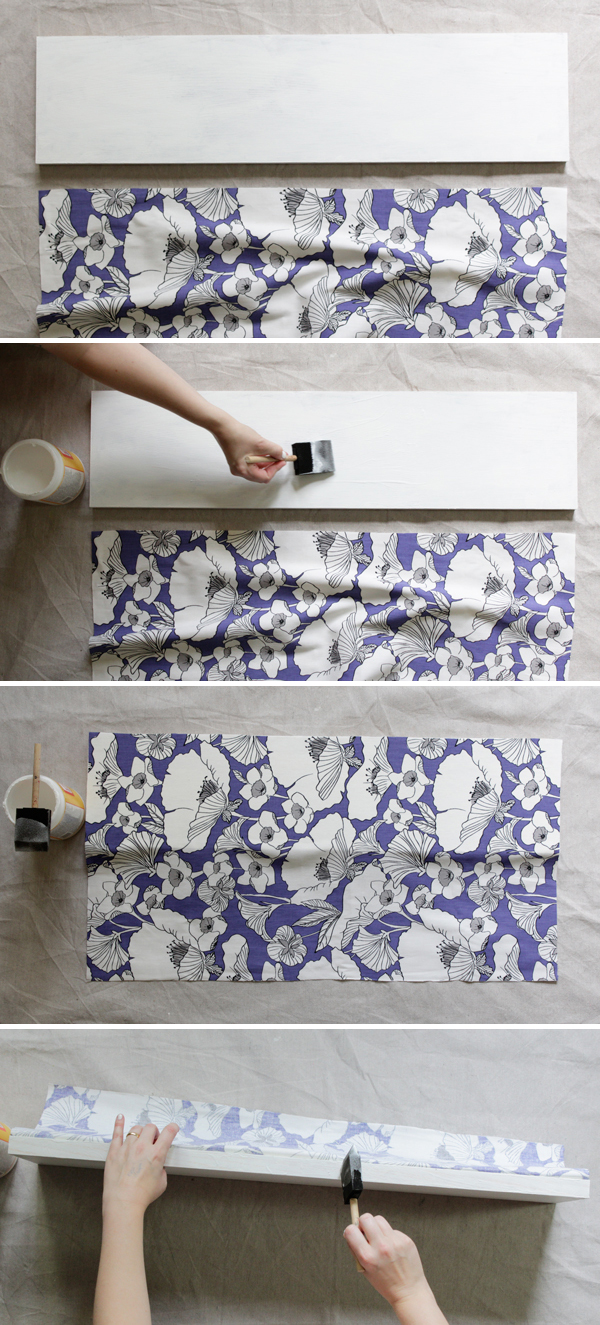
Paint Mod Podge to the short, front edge of the shelf and carefully fold the fabric over it, smoothing it straightly into place. Feel free to pull on your fabric as needed, but don’t pull on it so hard as to stretch your fabric, warping the pattern.
Next, apply Mod Podge to the third side of the shelf and smooth the fabric into place once again. There should be about a half inch of extra fabric on both raw ends. Paint a last layer of Mod Podge onto the wall-side edge of your shelf and stick the raw ends to it.
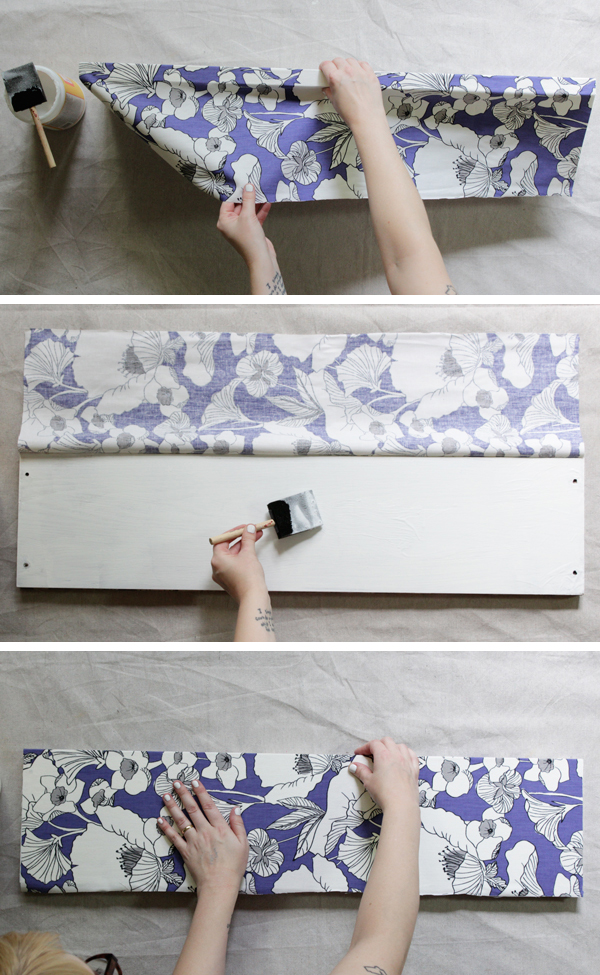
The next phase is to – one side at a time – paint Mod Podge all over the outside of your fabric and use a brayer to force the Mod Podge all the way through the fabric. Do all four sides and let the whole shelf dry completely.
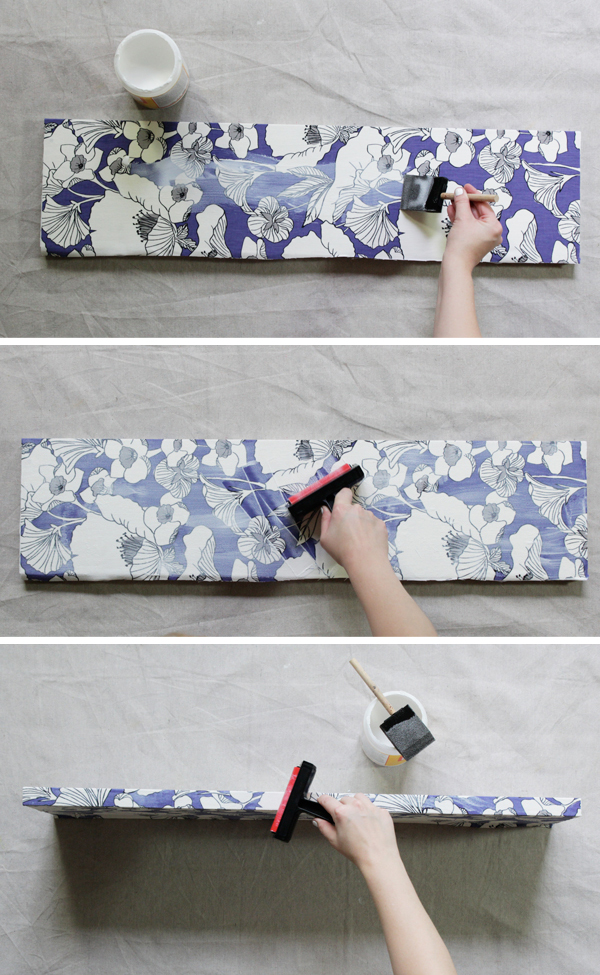
After your shelves dry, paint over all four sides again with a layer of Mod Podge Hard Coat, and let your shelves dry completely once again. Before hanging them up, let them sit and cure for four days. The curing makes your shelves less sticky and more water resistant, which is always desirable in a decoupage project!
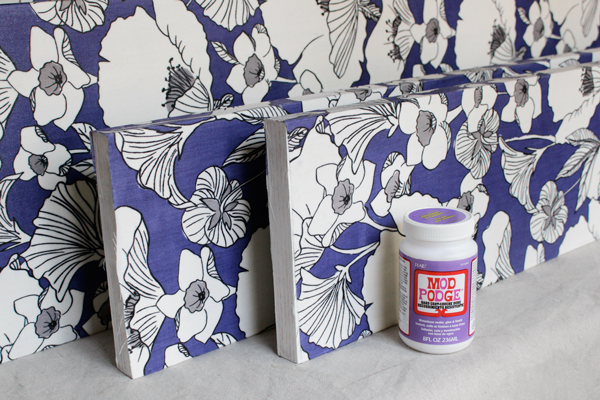
I shared a version of this tutorial at the uber-fantastic Mod Podge Rocks!

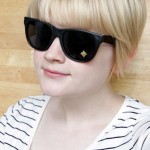
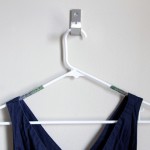
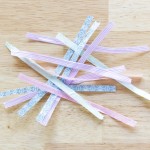


Lindo Trabalho……
I am doing this currently using a duvet cover, and have successfully stuck down all sides of the fabric on to the shelf, do I do the full layer of mod podge once this is dried or pretty much straight away??
Just saturate it – it’s so easy. As you use the brayer/roller to press out all the wrinkles, excess Podge will naturally come out. So fun! I haven’t done this in AGES. I’d love to hear how it comes out too! -Heidi :)
Heidi, how does this age? I’m considering putting fabric on the back wall of my kitchen cabinets for a pop of color – but will it yellow or otherwise age poorly? How have your shelves held up?
I ended up moving and giving the shelves away to a friend who’d always liked the fabric. However, I also used Mod Podge to cover some end tables I made with fabric, and they are still in great shape. Some folks complain about Mod Podge getting sticky with age, but if you use the correct type of Mod Podge (I like the Matte finish for covering fabric with wood), it won’t get sticky in my experience. I’ve had the end tables I linked for nearly a decade and use them in my living room daily.
Best,
Heidi